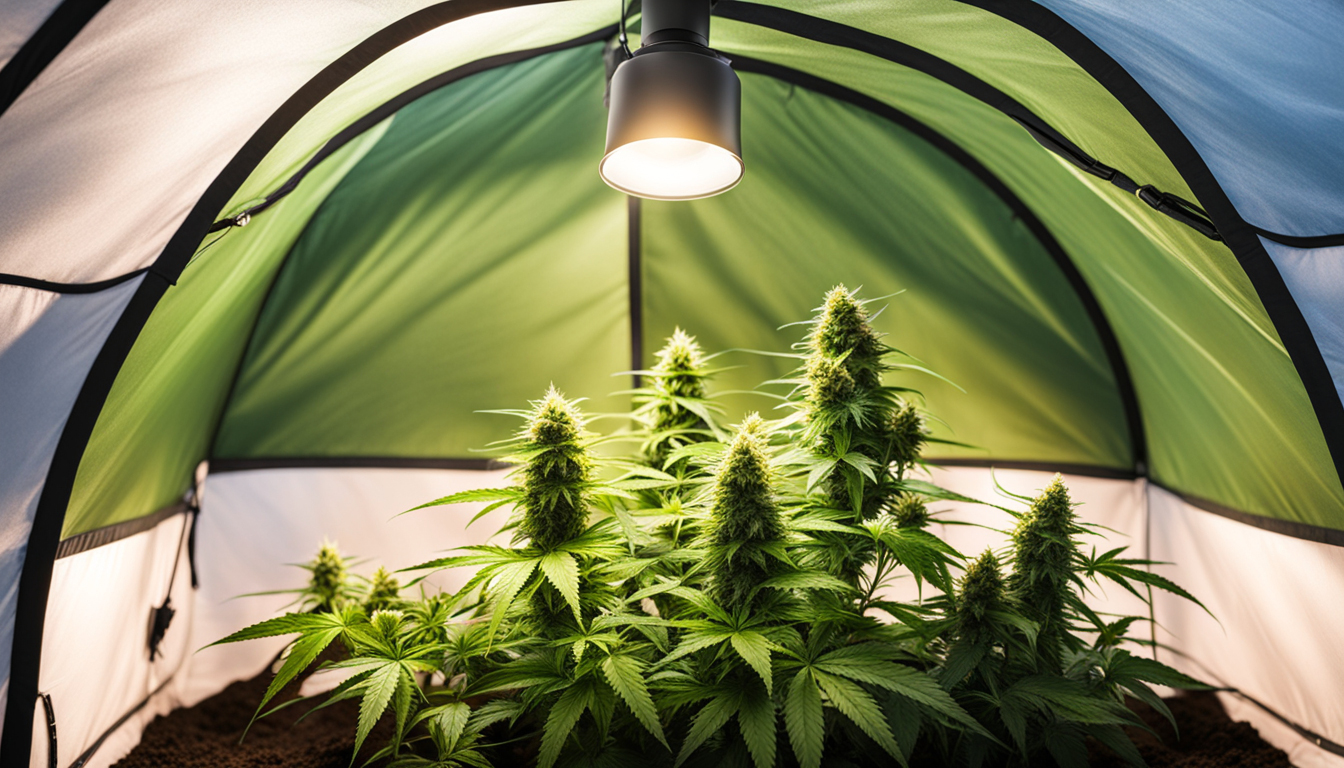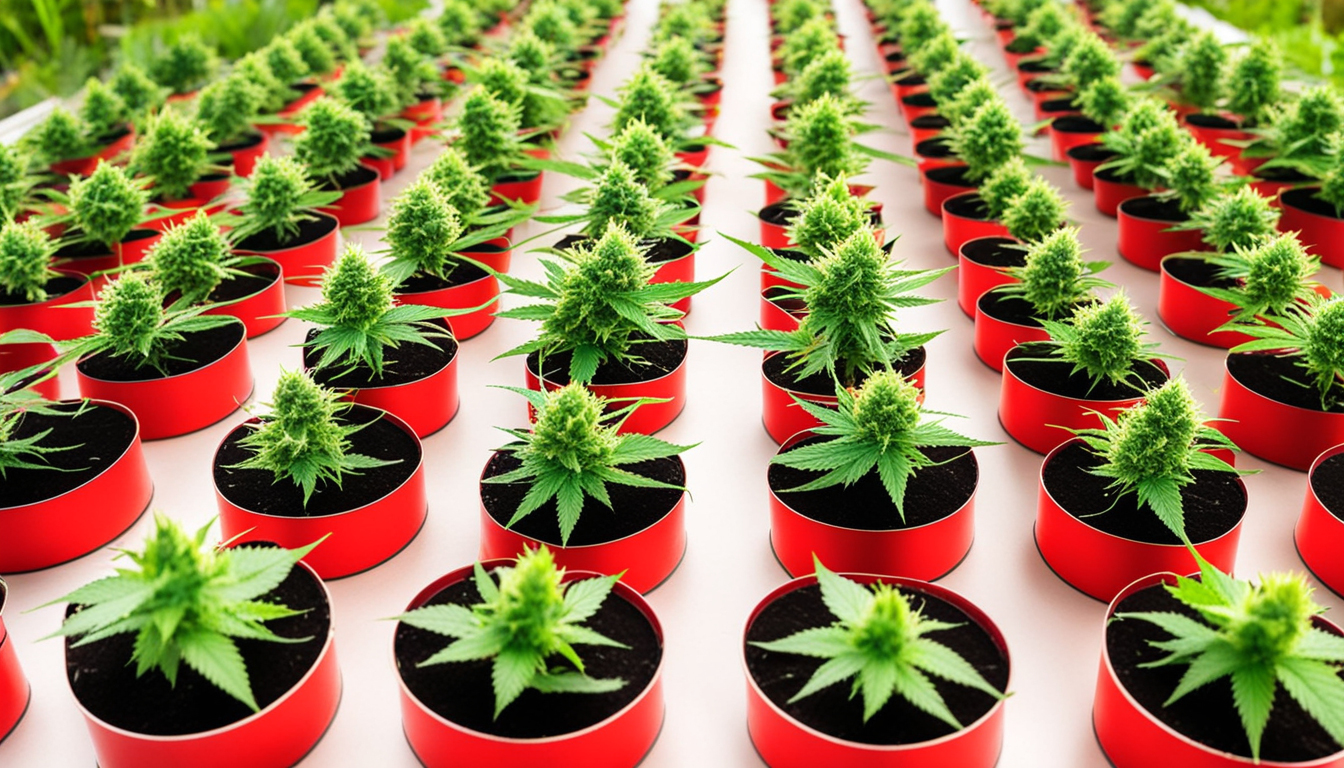
Whether you're just starting out with marijuana growing or looking to improve your existing crop, following this complete guide will help you produce big, high-quality yields right at home. With the right equipment, techniques, and care, cultivating marijuana indoors can be an extremely satisfying and cost-effective endeavor.
Choosing Weed Strains
The first step in planning your indoor grow is picking the right pot cultivars to grow. The three main types of weed plants each have their own characteristics.
Energizing strains
Known for their invigorating intellectual effects, sativas spread tall and slender with narrow leaves. They flourish in warmer equatorial climates and have a longer blooming time between 2.5-3 months indoors. Top sativa varieties include Jack Herer, Durban Poison, Super Lemon Haze, and Jack Herer.
Relaxing strains
Indicas provide calming body-focused effects and grow short and bushy with wide leaves. Accustomed to cooler mountain climates, they flower faster within 2-2.25 months. Popular indica strains include Northern Lights, Bubba Kush, and Bubba Kush.
Hybrids
Mixed strains blend traits from both energizing strains and indicas. They offer blended effects and have medium flowering times around 2.25-2.5 months. Well-known mixes are Blue Dream, OG Kush, and Blue Dream.

Setting Up Your Cultivation Space
Weed plants need the right controlled environment to succeed. Key factors for indoor farms are lights, ventilation, layout, and finding the ideal discreet area.
Location
Choose an unused space with direct access to water and power outlets. An empty spare room, large closet, corner of the basement, or grow tent securely placed in a garage all make great stealthy cultivation room spots.
Lighting
Marijuana requires intense light for all growth stages. LEDs are energy-efficient and come in broad spectrum options mimicking natural outdoor light. Cover 250-400 watts per sq. ft for the vegetative stage and 400-600 watts per sq. ft. for bloom.
Ventilation
Proper ventilation and exhaust systems keep ideal temperature, humidity, and pure CO2 levels. Set up quiet 10-15 cm blowers or carbon filters to circulate old air and eliminate smells.
Layout
Optimize your space by arranging plants strategically under the lamps and leaving room to access and work around them. Set up distinct zones for growth, bloom, curing, and cloning.

Cultivation Mediums
Cannabis can be grown in different substrates, each with benefits and cons. Pick a appropriate option for your particular setup and cultivation style.
Soil
The classic medium, soil is affordable and easy for beginners. It provides excellent taste but needs more irrigation and nutrients to feed plants. Amend soil with perlite or coco to improve aeration.
Coconut coir
Made from coir, renewable coconut fiber holds water but still lets in air to the roots. It's more sterile and more consistent than soil. Use coir-specific nutrients to avoid calcium buildup.
Hydroponics
In hydro systems, plant roots grow directly in nutrient water solution. This allows rapid growth but needs close monitoring of water chemistry. Deep water culture and drip systems are common techniques.
Germinating Seeds
Germination activates your weed seeds to begin sprouting taproots. This prepares them for planting into their growing medium.
Paper Towel Method
Place seeds between wet paper towel and maintain them damp. Inspect after a week for growing radicles indicating sprouting is complete.
Planting directly
Insert seeds right into wetted cultivation medium 6mm deep. Gently water and wait 7-14 days until seedlings push through the surface.
Rockwool Cubes
Presoak rockwool cubes in pH-adjusted water. Place seeds 6mm deep into the cubes. Keep cubes wet until seedlings emerge within 1-14 days.
Transplanting Young plants
Once germinated, marijuana young plants need to be transplanted to avoid overcrowding. Move them into appropriately sized containers.
Ready Containers
Load large pots with growing medium amended with time-released fertilizer. Let containers to absorb water overnight before repotting.
Gently repotting
Carefully separate seedling roots from germination medium using a spade. Put into prepared container at equal depth as before and gently water in.
Growth Stage
The vegetative stage promotes leafy growth and plant form through 3/4 to full day of continual light exposure. This stage usually lasts 1-2 months.
Using 18-24 Hours of Light
Use lamps on a 24 daily cycle or natural sunlight to initiate nonstop photosynthesis. Lamp output influences size and internodal spacing.
Nutrients
Use grow stage nutrients higher in N. Make sure pH remains around 6.5 for full fertilizer uptake. Feed 1⁄4 to 1⁄2 concentration after 14 days and increase slowly.
LST and topping
Topping, LST, and trellising manipulate growth shapes for even foliage. This boosts yields.

Flowering Stage
The blooming stage develops buds as plants reveal their sex under a 12/12 cycle timing. It lasts 2-3 months depending on variety.
Changing Light Schedule
Change grow lights to 12/12 or move outside for natural 12 hour cycle. This signals plants to begin blooming.
Stop Fertilizing
Leaching removes fertilizer residuals to improve flavor. Feed weakly the first period then just use plain water the last 2 weeks.
Flushing
Maintain 12/12 light timing but leach using pH-balanced water only. Resume clean watering if buds aren't ripe after two weeks.
Reaping
Knowing when pot is fully ripe delivers peak potency and aroma. Harvest plants at peak ripeness.
Identifying Ripeness
Look for fading pistils, swelling calyxes, and 10-15% cloudy trichs. Inspect buds across the plant as they won't all mature evenly.
Cutting Plants
Use sterilized, razor-sharp trimming scissors to carefully slice each plant at the base. Keep several inches of stalk attached.
Curing
Hang whole plants or colas upside down in a dark room with moderate temp and humidity around 50-60% for 1-2 weeks.
Curing
Curing keeps drying while aging the buds like aged spirits. This process smooths bitterness and intensifies cannabinoid and terpene profiles.
Curing containers
Trim dried buds from stems and store into sealed containers, filling about 3⁄4 full. Use a sensor to monitor jar humidity.
Opening jars daily
Unseal jars for a few hours each day to gradually reduce humidity. Remoisten buds if RH goes under 55%.
Final Cure
After 2-3 weeks when humidity levels off around 55-60%, perform grow cannabis a last manicure and keep long-term in sealed jars.
Common Problems and Solutions
Even seasoned cultivators run into different cannabis plant problems. Identify problems soon and fix them correctly to maintain a healthy garden.
Nutrient Deficiencies
Chlorosis often signify inadequate nitrogen. Purpling stems and leaves show phosphorus deficiency. Test pH and boost fertilizers slowly.
Pests
Spider mites, fungus gnats, thrips, and nematodes are frequent pot pests. Use organic sprays, ladybugs, and sticky traps for natural control.
Powdery mildew
Excessive moisture promotes botrytis and bud rot. Improve airflow and circulation while lowering humidity below 50% during flowering.

Summary
With this complete indoor marijuana growing guide, you now have the knowledge to grow plentiful strong buds for private grows. Apply these steps and techniques throughout the germination, growth, and bloom stages. Spend in quality equipment and carefully check on your plants. In time, you'll be compensated with sticky aromatic buds you grew yourself under the loving care of your green hands. Good luck cultivating!